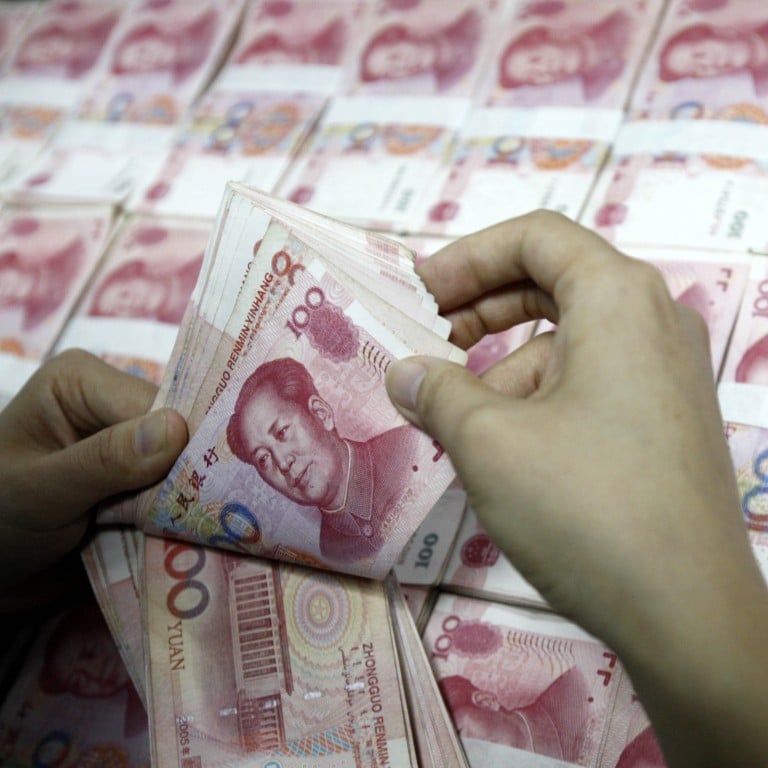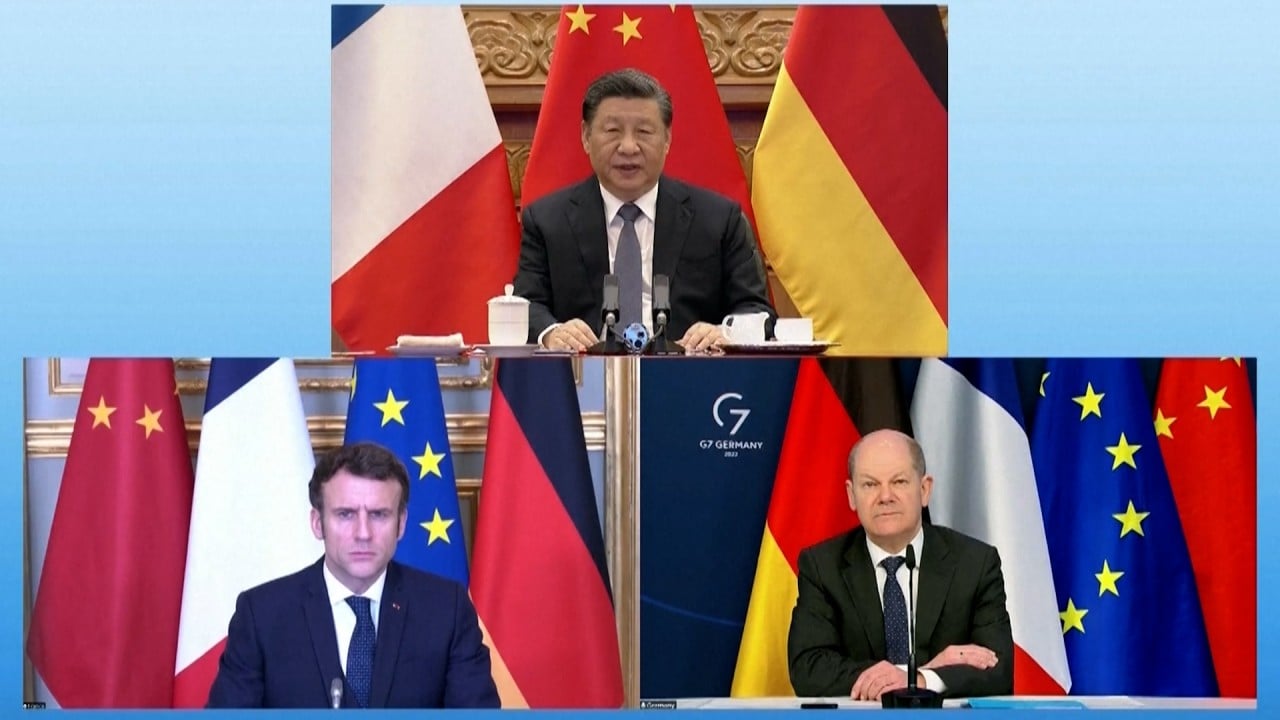
China’s yuan weakens as concern about capital outflows, economic slowdown grows
- China’s central bank set the yuan midpoint at 6.4098 per US dollar on Thursday, a 0.3 per cent fall since the start of the week and a 1 per cent decline this month
- Capital outflows, triggered by market expectations of more aggressive rate rises in the US and Europe this year, have alarmed officials in Beijing
China on Thursday lowered its official yuan midpoint, with the onshore trading rate at its lowest since October, a sign authorities may have already taken action to relieve pressure caused by economic headwinds and the US Federal Reserve’s decision to hike rates.
The People’s Bank of China set the yuan midpoint at 6.4098 per US dollar on Thursday, a 0.3 per cent fall since the start of the week and a 1 per cent decline this month.
Domestic foreign exchange trading touched 6.45 per dollar – the lowest level since October.
“The central bank should tolerate yuan depreciation to a level between 6.6 and 6.7 to create room for rate cuts,” Zhang Ming, deputy director of the Institute of Finance at the Chinese Academy of Social Sciences, wrote in an article on his WeChat account on Monday.
Regulators have long called for basic stability in China’s yuan exchange rate, highlighting its flexibility to absorb external shocks.
The yuan exchange rate was unusually strong in March despite the Russia-Ukraine war and the US Federal Reserve’s 25 basis points rate hike. Some analysts speculated the currency had been buoyed by an increase in Russian holdings amid Western sanctions.
China sees ‘unprecedented’ capital outflows after Russia invades Ukraine
Many overseas investors, however, have fled the Chinese market as monetary policy divergence with the US has narrowed the interest rate spread, and bilateral tension continues over the audit of overseas listed Chinese companies.
The yield of China’s 10-year Treasury bonds stayed at 2.8525 per cent on Thursday, slightly higher than the 2.85 per cent premium for 10-year US Treasury bills.
A net outflow of 45 billion yuan (US$6.9 billion) was recorded last month from the Stock Connect programme that links exchanges in Hong Kong and the mainland.
Overseas investors also slashed their holdings of Chinese bonds by 112.5 billion yuan in March, after selling 80.3 billion yuans’ worth a month earlier.
“Domestic monetary policies might have been elbowed against the backdrop of fast rate hikes of overseas central banks,” said Huatai Securities economist Eva Yi in a note.
Financial stability and economic growth, rather than the China-US interest rate spread, is the major factor influencing the yuan exchange rate, Yi said.
“The exchange rate can only be stabilised after domestic growth is stabilised,” she said.
Many investment banks have slashed their economic growth forecasts for China, as Beijing’s dynamic zero-Covid strategy disrupts economic activities and supply chains.


